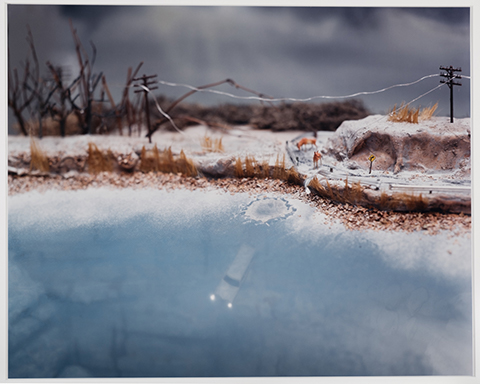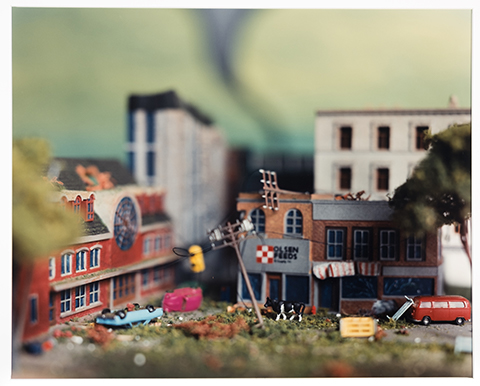
Keywords: Anthropocene, Power

Keywords: Anthropocene, Power
Lori Nix (American, b. 1969)
Ice Storm (left) and Tornado (right), from the series, Accidentally Kansas (1999)
Chromogenic print, 15 x 19” each
Gift of the Artist, Medici Circle, 2000.85.2 + 3
Growing up in Kansas meant experiencing many natural disasters like floods, tornadoes, blizzards and droughts. In the series, Accidentally Kansas, Nix explores the natural disasters of her youth in miniature models. “Because my work features a model and not a real place, it creates a safe space to think about these larger ideas of disaster. Devoid of people, these spaces become meditative and full of possibilities,” says Nix.
Nature's Continuing Power
In both images, ice storm and tornado, the greater power of Nature over humans is made manifest. At any moment, it can disrupt our comfortable and convenient lives.
Ice storms signify the mutability of water in Earth history. Its origin as vapor, its condensation from that vapor into a flowing liquid, and its freezing into a solid substance that either weighs down whatever it falls on or renders our pathways dangerously slippery. Almost all of Earth's water was originally steamed out of hot rock in the planetary interior billions of years ago. Liquid water came later, when the Earth cooled enough. Water as ice came even later, after the planet cooled even more. The ultimate fate of our planet is to fry before it freezes.
Tornadoes concentrate the enormous power of moving air masses into ultra-local vortexes. Ironically the weakest of Earth's layers (air) is transformed into an agent capable of wrecking our strongest things. Our carbon emissions have made tornadoes more frequent, stronger, and less predictable.